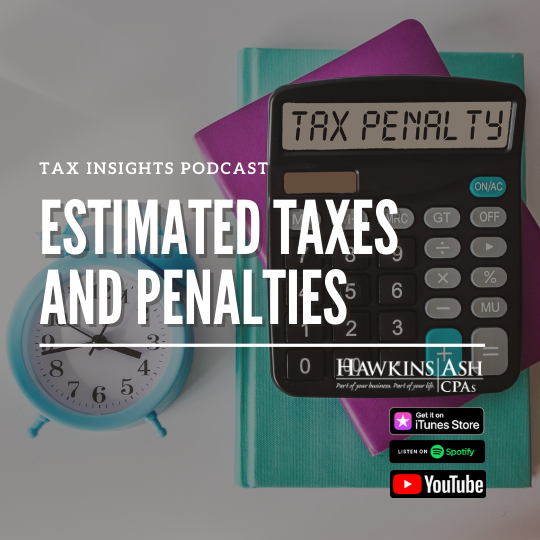We have talked in the past about cash flow being the number one thing that can bring down a small business. As a business grows, cash flow can be an issue. But as a business grows, so does the potential tax bill at the end of the year. In this Tax Insights Podcast Episode, I want to talk about how businesses pay their taxes and things that might be different here in 2021.
I know we talked about estimated tax payments in the past, but can you give a refresher?
- As an employee, there are taxes that get taken off your paychecks. But businesses do not have taxes withheld off their income, so they have to calculate it manually.
- These taxes are then paid in quarterly, generally April, June, September and January each year. Well guess what, the June payment will be due soon.
How are the payments calculated?
- For most businesses it is calculated based on last year’s income. The IRS calls this safe harbor.
- Safe harbor says that if a business pays in at least –
- 90% of your current year tax
- 100% of PY Tax (110% if AGI over $150k)
- If you don’t pay in enough, the IRS will charge you an interest penalty.
What happens when a business had low income in 2020 because of the pandemic, but this year their income will be higher?
- That is a potential problem for this year.
- If the business 2020 income was low, then the safe harbor estimates are lower.
- If the business income goes up in 2021, then tax will be owed when the tax return is filed.
- Now there will not be any penalties, but the additional tax can pose a cash flow problem if the business is not ready.
What should a business do to prepare for this?
- Company can pay their estimates and also put money aside for the year-end tax bill.
- Or there is nothing that says that a business can’t pay more than the minimum amount.
- If business income has doubled, they can certainly pay a larger payment.
If they don’t do either of these, what would happen when they file their return?
- Normally it is a surprise that businesses may not be ready for.
- They will owe tax for the current year since they paid estimates based on last year’s lower income.
- But here is the surprise – they also owe a first quarter estimate for the next year and that estimate is based on the higher 2021 income.
- Both these payments (current year tax and first quarter estimate) are due at the same time (normally April 15th)
Be sure to talk to a tax professional if you have any questions about estimated taxes and penalties or would like further assistance.





